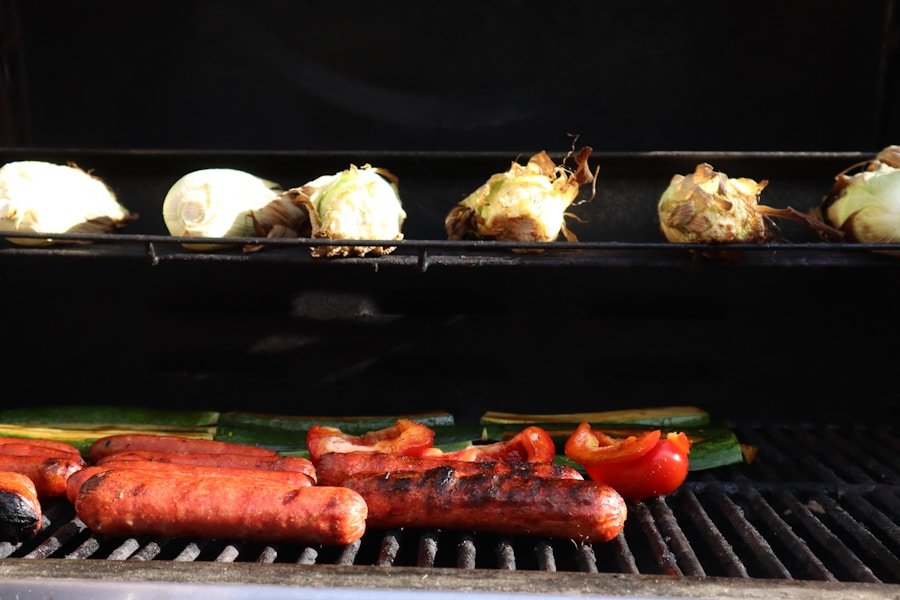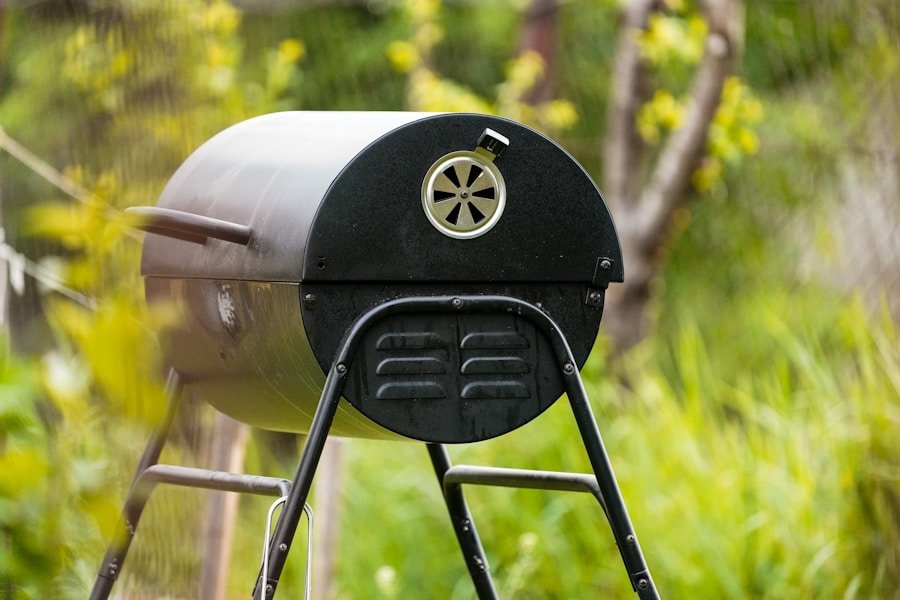When embarking on the journey to purchase a gas grill, the first step is to thoroughly assess your cooking needs. This involves reflecting on how often you plan to grill, the types of food you enjoy preparing, and the number of people you typically cook for. For instance, if you are an avid griller who enjoys hosting large gatherings, you may require a grill with a larger cooking surface and multiple burners to accommodate various dishes simultaneously.
Conversely, if you primarily grill for yourself or a small family, a compact model may suffice, allowing for easier storage and less fuel consumption. Additionally, consider the cooking styles you prefer. Are you inclined towards direct grilling, where food is cooked over high heat for a short duration, or do you favor indirect grilling, which involves slower cooking at lower temperatures?
Some gas grills come equipped with features that cater to both methods, such as side burners for sauces or rotisserie attachments for slow-roasting meats. Understanding your culinary preferences will guide you in selecting a grill that aligns with your cooking style and enhances your outdoor culinary experience.
Key Takeaways
- Assess your cooking needs based on the number of people you typically cook for and the types of food you like to grill.
- Understand the different types of gas grills, including natural gas, propane, and infrared grills, to determine which best suits your needs.
- Consider the size and portability of the gas grill, especially if you have limited outdoor space or plan to take it on camping trips or tailgating events.
- Evaluate the construction and durability of the gas grill, looking for materials like stainless steel and cast iron that offer longevity and resistance to rust and corrosion.
- Explore additional features and accessories such as side burners, rotisserie kits, and temperature gauges to enhance your grilling experience.
Understanding Different Types of Gas Grills
Propane Grills: Portability and Versatility
Propane grills are portable and versatile, making them ideal for those who enjoy tailgating or camping. They use propane tanks that can be easily replaced or refilled, providing flexibility in where you can grill.
Natural Gas Grills: Convenience and Reliability
On the other hand, natural gas grills are typically installed in a fixed location and connect directly to your home’s natural gas line. This option is convenient for those who grill frequently and prefer not to worry about running out of fuel.
Infrared and Hybrid Grills: Advanced Technology and Flavor Options
Another category worth exploring is the infrared gas grill, which utilizes infrared technology to produce high heat quickly, allowing for faster cooking times and searing capabilities that lock in juices and flavors. Additionally, hybrid grills combine gas with charcoal or wood chips, offering the best of both worlds for those who appreciate the smoky flavor of traditional grilling but want the convenience of gas. Understanding these distinctions will help you choose a grill that not only meets your cooking needs but also aligns with your grilling philosophy.
Considering Size and Portability

The size of the gas grill is a critical factor that can significantly impact your grilling experience. When considering size, think about both the cooking area and the overall footprint of the grill. A larger cooking surface allows for more food to be prepared at once, which is particularly beneficial during gatherings or barbecues.
However, it’s essential to balance this with the available space in your outdoor area. A grill that is too large may overwhelm a small patio or balcony, while a compact model might not meet the demands of larger groups. Portability is another aspect to consider, especially if you plan to take your grill on the go.
Some models are designed with wheels for easy movement, while others are lightweight and compact enough to fit in the trunk of a car. If you enjoy camping or tailgating, look for grills that are specifically marketed as portable. These often feature foldable legs and smaller dimensions without sacrificing performance.
Ultimately, evaluating both size and portability will ensure that you select a grill that fits seamlessly into your lifestyle and outdoor space.
Evaluating Construction and Durability
| Construction Material | Durability Rating | Cost |
|---|---|---|
| Concrete | Excellent | Medium |
| Steel | Very Good | High |
| Wood | Good | Low |
| Brick | Very Good | Medium |
The construction quality of a gas grill is paramount when it comes to longevity and performance. A well-constructed grill not only withstands the elements but also provides consistent heat distribution for even cooking. Look for grills made from high-quality materials such as stainless steel, which is resistant to rust and corrosion.
Stainless steel components not only enhance durability but also contribute to a sleek appearance that can elevate your outdoor space. In addition to material quality, pay attention to the overall design and craftsmanship of the grill. Features such as welded joints instead of screws can indicate a more robust construction.
Furthermore, consider the thickness of the grill grates; thicker grates tend to retain heat better and provide superior searing capabilities. A durable grill will not only serve you well over time but also require less maintenance and repair, making it a worthwhile investment in your outdoor cooking endeavors.
Exploring Additional Features and Accessories
Modern gas grills often come equipped with a variety of additional features that can enhance your grilling experience. One popular feature is the inclusion of side burners, which allow you to prepare sauces or side dishes simultaneously while grilling your main course. This can save time and streamline your cooking process, especially during larger gatherings where multiple dishes are being prepared.
Another feature to consider is temperature control systems that provide precise heat management. Some grills come with built-in thermometers that allow you to monitor internal temperatures without lifting the lid, ensuring optimal cooking conditions. Additionally, features such as rotisserie kits can add versatility by enabling slow-roasting techniques that yield tender and flavorful results.
Accessories like grill covers, tool sets, and smoker boxes can further enhance your grilling experience by providing protection and expanding your cooking options.
Setting a Budget

Understanding the Price Range
A higher price tag often correlates with better quality materials and advanced features; however, there are also many mid-range options that offer excellent performance without breaking the bank.
Considering Ongoing Expenses
When setting your budget, consider not only the initial cost of the grill but also potential ongoing expenses such as fuel costs, maintenance supplies, and accessories. It may be beneficial to allocate funds for essential accessories like grilling tools or protective covers that can prolong the life of your grill.
Making an Informed Decision
By having a clear budget in mind, you can narrow down your options effectively and make an informed decision that aligns with both your financial situation and grilling aspirations.
Researching Brands and Customer Reviews
Once you have established your budget and narrowed down your options based on your cooking needs and preferences, it’s time to delve into researching brands and customer reviews. Different brands have varying reputations based on their history in the market, customer service quality, and product reliability. Established brands often have a track record of producing high-quality grills backed by warranties and customer support.
Customer reviews provide invaluable insights into real-world experiences with specific models. Look for reviews that discuss performance aspects such as heat distribution, ease of use, and durability over time. Pay attention to recurring themes in reviews—both positive and negative—as they can highlight potential issues or standout features that may influence your decision.
Engaging with online forums or social media groups dedicated to grilling can also provide additional perspectives from fellow enthusiasts who have firsthand experience with various brands.
Comparing Warranty and Customer Service Options
Finally, when selecting a gas grill, it’s crucial to compare warranty options and customer service offerings from different manufacturers. A robust warranty can provide peace of mind by covering potential defects or issues that may arise after purchase. Many reputable brands offer warranties ranging from one year for basic components to lifetime warranties on certain parts like burners or grates.
In addition to warranty coverage, consider the quality of customer service provided by the manufacturer. Accessible customer support can be invaluable if you encounter issues or have questions about assembly or maintenance. Researching how responsive a brand is to customer inquiries can help ensure that you receive assistance when needed.
By carefully evaluating warranty options alongside customer service quality, you can make a more informed decision that protects your investment in a gas grill while ensuring ongoing support throughout its lifespan.
If you are looking to enhance your outdoor cooking experience beyond just a gas grill, you may want to consider checking out the article on the 5 Most Innovative Specialty Cooking Devices. This article highlights unique and cutting-edge cooking gadgets that can take your culinary skills to the next level. Additionally, if you need a step stool to help you reach those high shelves in your kitchen while preparing meals, you may find the article on the 5 Top Step Stools for Kitchen Helpers helpful. And if you want to stay hydrated while grilling outdoors, you might want to consider investing in one of the 5 Best Water Coolers for Your Home Office to keep your drinks cold and refreshing.
FAQs
What factors should I consider when choosing a gas grill for my home?
When choosing a gas grill for your home, consider factors such as size, cooking power, construction materials, features, and budget.
What size gas grill should I choose for my home?
The size of the gas grill you choose should depend on the amount of cooking space you need and the available space in your outdoor area. Consider how many people you typically cook for and whether you will be using the grill for large gatherings.
What cooking power should I look for in a gas grill?
The cooking power of a gas grill is measured in BTUs (British Thermal Units). Look for a grill with a higher BTU rating if you want to be able to cook at higher temperatures and more quickly.
What construction materials are best for a gas grill?
Stainless steel is a popular and durable choice for gas grill construction. Look for a grill with stainless steel burners, cooking grates, and body for longevity and easy maintenance.
What features should I look for in a gas grill?
Consider features such as side burners, rotisserie burners, infrared technology, and built-in thermometers. These features can enhance the versatility and performance of your gas grill.
What is a reasonable budget for a gas grill for home use?
Gas grills can range in price from a few hundred dollars to several thousand dollars. Set a budget based on your needs and preferences, and consider the long-term value and durability of the grill.

